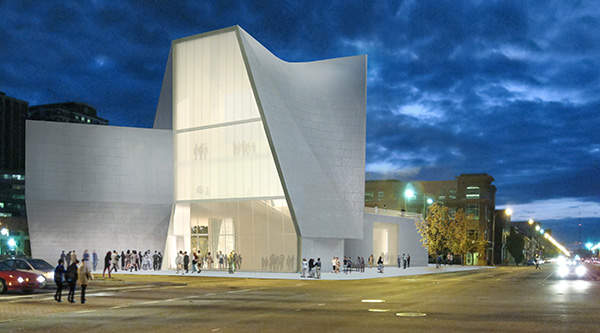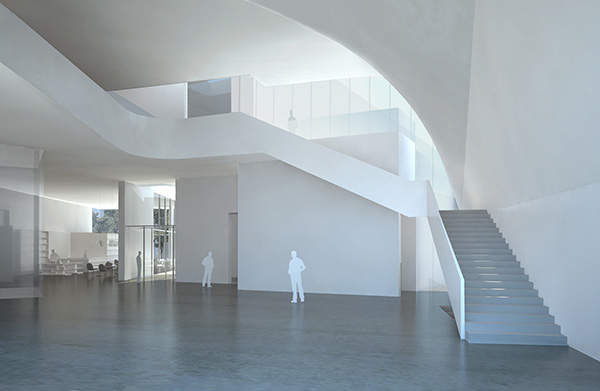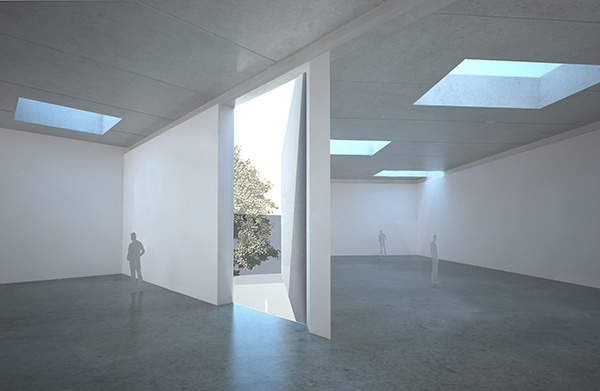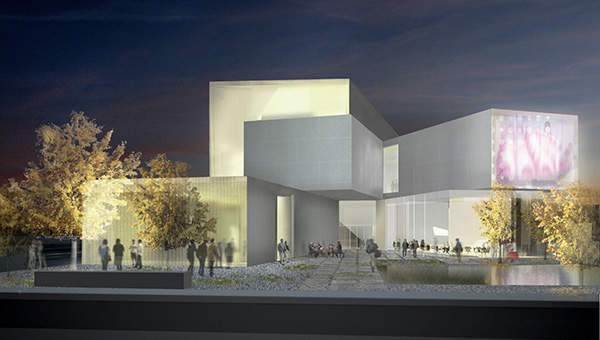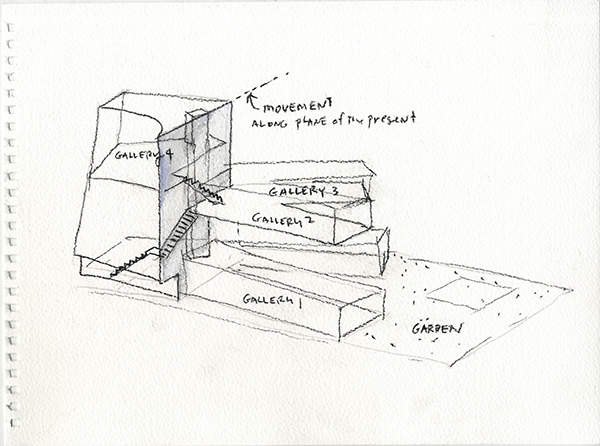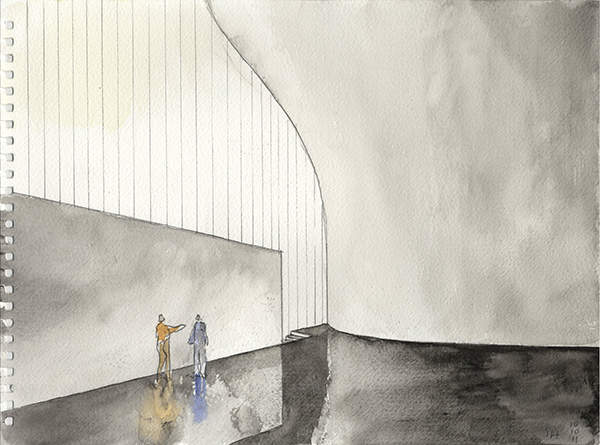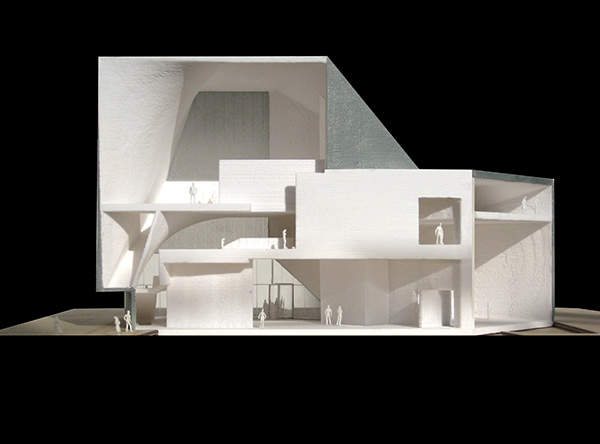
Richmond’s Institute of Contemporary Art, once built, will be located at the meeting point of Belvidere and Broad Streets near Intersection 95.
The building will allow the presentation of contemporary art ideas to students of the Virginia Commonwealth University (VCU) and Richmond citizens alike.
The 38,000 square feet art institute will enable the organisers to host exhibitions for showcasing visual arts, theatre, music, dance and film shows for the students of the VCU and visitors.
On 26 April 2012 the university authorities revealed the design for the institute at New York’s Meulensteen Gallery. The exhibition explained the ideas that went into the creation of the final design blueprint by architects Steven Holl and partner Chris McVoy. BCWH Architects of Richmond paired up with Steven Holl Architects to design the building.
Design of VCU’s Institute of Contemporary Art
The corner location gives the building a unique design. The Z-shape of the façade is formed by the intersection of the forum and performance space. This vertical Z-shape joins the X-Y axis, which depicts the moving line of intersection. A Z-shaped line termed ‘plane of the present’ links the galleries, forum and performance spaces. This unique design allows views of the building’s units from different perspectives.
There will be a dual entrance to the venue, one facing the busy road and another, the sculpture garden, facing the campus. The dual entrance and absence of fences will bridge the gap between the university and the community.
The central building will have two floors with a partial roof on the ground floor. The open space at the centre will be connected to the performance space in the ground floor and will open to the sculpture garden and café.
The first gallery and café open up to the garden. The garden can be accessed by large pivot doors that allow the events to be continued in the garden and establishes a link between the interiors and exteriors.
The three galleries will split out from the central forum and form a fork-like shape. These three galleries define the space around the garden. The first gallery will occupy the first floor, while the second and third galleries will be on the second floor. Just adjacent to the third gallery is a classroom. The fourth gallery is a vertical space where art works can be suspended or placed on the floor slab.
Galleries can be accessed by a big elevator to the top floor and visitors can also move to the upper floors through the ground floor gallery.
The size of the galleries will equal the size of New York’s Chelsea galleries, therefore allowing enough space to move about. Each gallery has a different feature. The revealing concrete beams and planks of the gallery match with the concrete floor. Flexibility of design allows the hosting of different genres of art simultaneously.
The second floor sculpture terrace will face the Broad Street while the sculpture garden with a pond will be located on the west side of the site, facing Pine Street.
The auditorium with the performance space will have a seating capacity of about 247 seats. There will be exhibition space, laboratory and a think-tank that will allow research and academic activities related to art inside the building.
Materials used to build Virginia’s ICA
The exterior façade will be made of pre-weathered zinc surfaces with a satin finish. The zinc panels enclose the entire structure and provide shelter to the garden. The panels will fit with the surrounding concrete structures and urban setting. The material will also reduce the glare of light falling on the facade.
Transparent and translucent glass panels cover the walls of the building. They will allow daylight inside the building and also provide an insight to the events happening inside the building. Video projections will be featured on the glass panels which are reflected over the garden.
The sculpture garden will be paved with bluestone gravel. The galleries and other structures will be built with concrete.
Financing the arts institute
The construction of ICA will cost $32m. As of June 2012 the university’s campaign committee has raised $14m. The two firms, Kathie and Steve Markel and Pam and Bill Royall, contributed $5m each as gifts and co-chair the campaign committee. Steven Holl Architects along with BCWH will help in raising funds for the project.
Facilities and sustainability of Richmond’s ICA
Related project
New Museum of Contemporary Art, New York, United States of America
Manhattan’s sole contemporary art museum has had a reputation for presenting edgy work.
There will be 10,000 square feet of interior space. The performance space will allow screening of films and other events. The backstage wall will open up to serve as the loading dock to vehicles of all sizes and will double up as a spacious back-stage.
ICA will also have laboratory facilities to encourage academic and research activities. There will be a class room to accommodate 35 students.
The entrance of the premises will be spacious enough to host outdoor events and act as a meeting place for visitors. There will be parking at the site with additional parking spaces and a valet parking service during big events. There will be a café, ICA shop and a kitchen. There will be space to store art objects and preparation space.
Modern technology and natural resources are being used to construct the Institute of Contemporary Arts. This project is designed to receive LEED Platinum Certification Standard ratings.
There will be geothermal wells that generate heating and cooling energy for the building. Gingko trees are planted in the garden and the water pond is filled with recycled rain and waste water.
The grass roof assembly will absorb rain water, provide insulation and allow bio-diversity. The building will block out noise to maintain silence inside the gallery.
Contractors involved with Virginia University’s project
Robert Silman Associates provided structural ideas for the project. The mechanical engineer of the project is Arup. The landscaping will be done by Michael Boucher Landscape Architecture and all the light designs will be done by L’ Observatoire International.
Convergent Technologies Design Group is the audio / visual consultant and will be responsible for the auditorium acoustics.

